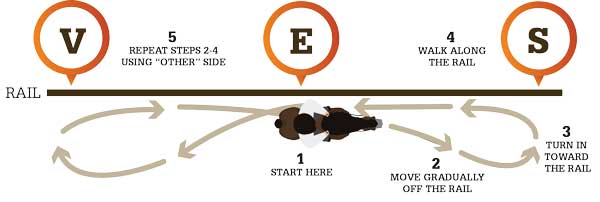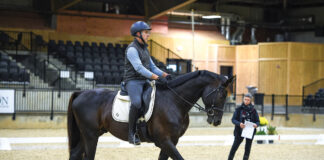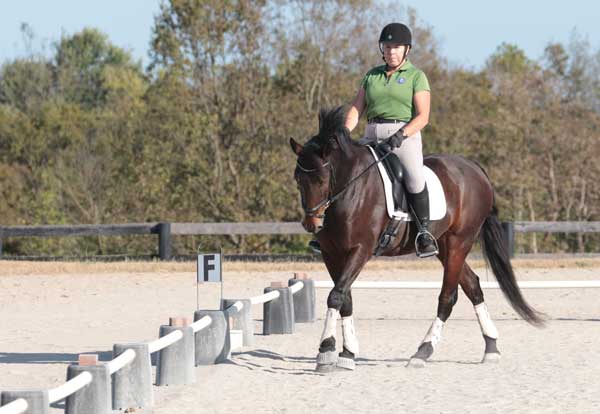
The beautifully trained dressage horse is so attuned to his rider that his response to the lightest leg aid is perfect, appearing to dance of his own accord. But some mounts fall elsewhere on the spectrum—somewhere between a balky Thelwell pony and a speed racer that Just. Won’t. Slow. Down.
Horses are not born knowing that the rider’s leg means “go.” The horse that fails to respond to a light calf squeeze either hasn’t been educated properly or he’s tuned out the rider as a defense mechanism, says Sherry Guess, a U.S. Dressage Federation-certified instructor in Porter, Okla.
“Light, responsive horses are made that way by their riders,” she says. “Unfortunately, so are dull horses. Many riders send contradictory messages: Their legs say ‘go forward,’ but then they pull on the reins to say ‘put your head down.”
A tolerant mount eventually ignores the leg aids, she says; a reactive one may express his frustration in a more athletic manner.
Then there’s the horse that zooms forward at the slightest touch of the rider’s leg. This type hasn’t been taught to accept the leg passively draped around his sides, and his overreactions effectively train the rider to keep the leg off.
“The horse should move forward from a light leg aid and decrease his speed or gait from a light rein aid,” says Guess. “The horse that moves forward but can’t be controlled isn’t in front of your leg; he’s just fleeing.”
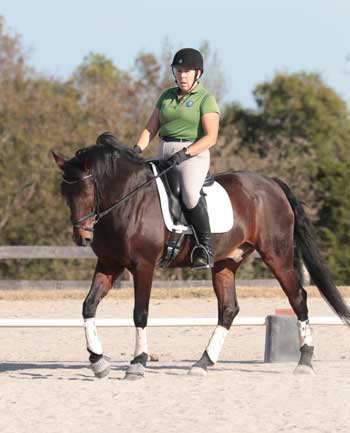
Introduce the Leg
Begin to teach the desired response to your leg aid by giving a light calf squeeze along with a voice cue. Don’t wear spurs in this elementary training stage. Through repetition, your horse will associate the leg aid with the voice command.
“Eventually, you’ll be able to subtract your voice and he will respond to the leg aid,” says Guess.
If your horse doesn’t move off smartly from a light leg aid, consider his temperament before you give a kick or tap with the whip, Guess cautions. Sensitive types may kick out or buck if they feel surprised or “shouted at” by stronger aids.
A lazy or dull horse, on the other hand, may require a bit of convincing. The rule here is “as light as possible, but as strong as necessary” to create the desired response.
Don’t omit the important final step in this process of training to get a better response to the leg aid: retesting the response to the light aid. If you have to kick or use the whip to get your horse to go forward and you don’t retry the light aid, you’ve taught him that it’s OK to ignore you until you shout.
Find Your Tempo
Left to their own devices, many horses will gradually slow down, even if they were nicely forward at first. Some riders don’t notice the change in tempo until it’s dramatically slower or the horse breaks gait, Guess says. Then the startled rider gives a kick, and the horse surges forward.
“You must stay aware of the tempo the horse is able to maintain and make sure he does,” Guess says.
At first, be happy with a circle or two at a steady pace. Build up gradually. Need help finding that steady tempo? Ride to a song with the right beats per minute.
Independent Aids
Guess points out that some riders kick or pull without meaning to because of poor balance or body control. When you’re trying to get a horse to respond to your leg, the last thing you want is to inadvertently punish him for obeying.
“Once he moves forward, don’t immediately try to control his head,” says Guess.
If you ask him to trot and he canters instead, allow the canter for a few strides and make a mental note to dial down your leg aid next time. Calmly shorten your reins if needed, quiet your seat, and give small squeezes with the rein until he comes back to the gait you want.
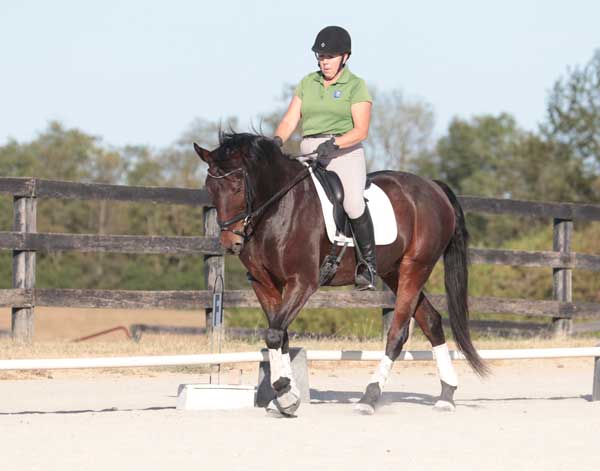
The Too-Quick Horse
“[A rushing horse] is either in flight or out of balance,” says Guess. “Pulling will only make him tumble forward with more determination.
Riding in straight lines tends to make the problem worse. Circles, turns, and changes of direction are your friend while trying to get a better response to the leg aid.
Make increasingly smaller circles until it becomes difficult for your horse to continue his rushing pace, Guess advises. Use your voice to praise him when he moves into the gait and speed you want. Then give him a walk break before repeating the exercise.
“[You can also] allow the circle to enlarge as long as he keeps the correct tempo,” she adds. “Decrease the circle as soon as you feel him lose balance and start to speed up again.”
Willing and Responsive
A well-known saying in dressage is: The lazy horse needs to learn to go with the leg off; the hot horse needs to learn to go with the leg on.
“Insist on getting an appropriate response; then praise,” says Guess.
In front of the leg isn’t about getting the horse in a frame.
“It’s about having the horse available to you whenever you use your leg.”
Bowtie ExerciseWhile this exercise may look simple, it has many benefits for both horse and rider.Start by walking along the rail (1). At the middle letter of the long side of the arena, walk in a slight diagonal off the rail (2) so that you’re about 6 feet off the rail at the next letter.Make a half-circle left toward the rail (3) and head back to E. That’s the first loop of the bowtie. Walk past E (4) and make the second loop of the bow tie at the next letter, reversing in the opposite direction (5). Because it’s set next to the rail, the rail acts to check an overeager horse without you having to pull on the reins to slow down. With the continual turns, a horse that’s more dull to your leg learns that he needs to be more responsive in order to maintain his balance. This gymnastic pattern also helps to develop the horse’s core muscles, teaching him that he’ll be most comfortable if he stays round and soft over his topline. It also teaches him to stretch and relax his hips as his hind legs cross. For the rider, the bowtie exercise will help you coordinate the driving and restraining aids, as well as half-halts. |
Online Exclusive Content: |
This article on how to train a better response to the leg aid originally appeared in the December 2019 issue of Horse Illustrated magazine. Click here to subscribe!

